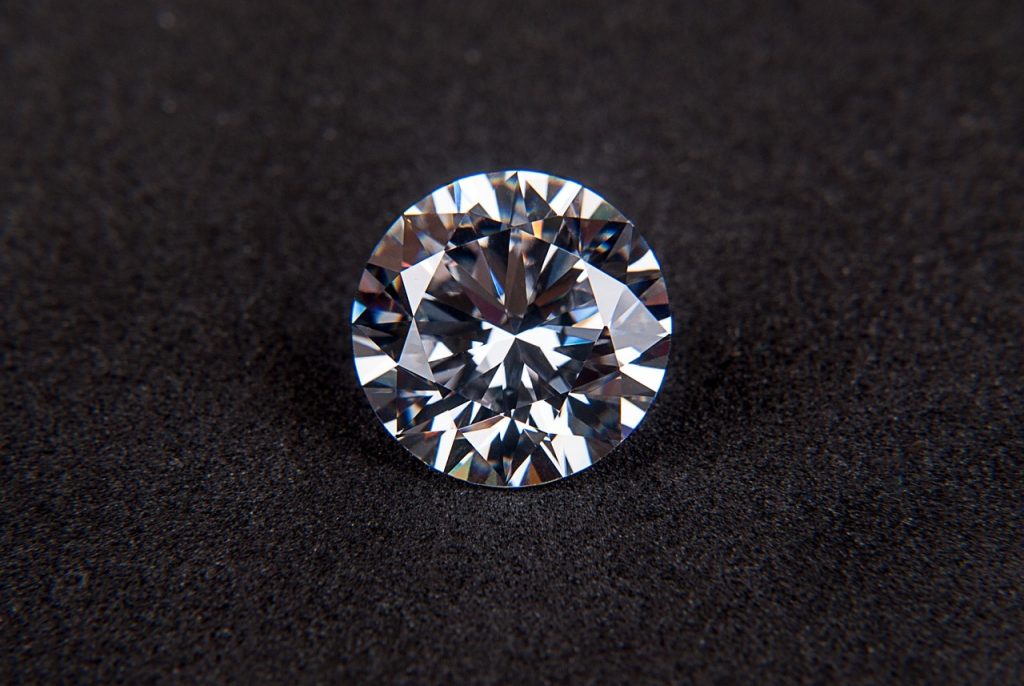When purchasing a diamond, one of the most critical aspects to consider is its certification. A diamond certificate, often referred to as a grading report, is an expert analysis of a diamond’s characteristics, including its carat weight, cut, color, clarity, and more. The certificate provides assurance of the diamond’s quality and authenticity. However, not all certificates are created equal. Three of the most reputable and widely recognized diamond grading organizations are the Gemological Institute of America (GIA), the Hoge Raad voor Diamant (HRD), and the International Gemological Institute (IGI). Understanding the differences between these certifications can greatly influence your decision when purchasing a diamond.

1. The Importance of Diamond Certification
Before diving into the specifics of GIA, HRD, and IGI, it’s essential to understand why diamond certification matters. A diamond certificate serves several crucial purposes:
- Verification of Quality: A certificate verifies that the diamond’s characteristics, such as the Four Cs (Carat weight, Cut, Color, and Clarity), are as described by the seller. This ensures that you are getting what you pay for.
- Transparency: Certificates provide transparency in the diamond-buying process. They allow you to compare diamonds objectively, as the grading criteria are standardized.
- Resale Value: A certified diamond generally holds its value better and is easier to resell than a non-certified diamond.
- Confidence: Certification by a reputable laboratory gives buyers confidence in the quality and authenticity of their purchase.
2. The Gemological Institute of America (GIA)
The GIA is perhaps the most well-known and respected diamond grading laboratory in the world. Established in 1931, the GIA set the standard for diamond grading and introduced the globally accepted “Four Cs” system (Carat, Cut, Color, Clarity) as a means of assessing diamond quality.
- Grading Process: The GIA is known for its strict and unbiased grading process. Diamonds are graded by multiple gemologists independently, ensuring that the grading is as accurate and consistent as possible. The GIA grading report includes a comprehensive analysis of the diamond’s characteristics, a plotted diagram of its inclusions, and a cut grade (for round diamonds).
- Reputation: The GIA’s reputation is built on consistency, accuracy, and integrity. As a result, GIA-certified diamonds often command a premium price due to the trust and reliability associated with the GIA name.
- Innovations: The GIA is also at the forefront of gemological research, contributing to advancements in diamond grading and identification of synthetic and treated diamonds.
3. The Hoge Raad voor Diamant (HRD)
HRD Antwerp is another leading diamond grading laboratory, particularly recognized in Europe. Established in 1973, HRD is closely linked to Antwerp, one of the world’s primary diamond trading hubs. The laboratory is known for its rigorous grading standards and its European influence.
- Grading Process: HRD’s grading process is detailed and stringent, similar to that of the GIA. However, there are slight variations in the grading criteria, especially in the assessment of color and clarity. HRD also provides a comprehensive certificate that includes a full description of the diamond’s characteristics and a plotted diagram of inclusions.
- Reputation: HRD is highly regarded, particularly in European markets. Diamonds with HRD certification are often preferred by buyers in Europe due to the lab’s strong reputation and proximity to Antwerp’s diamond industry.
- Regional Influence: While HRD is respected globally, it has a stronger presence and influence in European markets compared to the GIA, which is more dominant in the United States and Asia.
4. The International Gemological Institute (IGI)
The IGI, founded in 1975, is another prominent diamond grading laboratory with a global presence. IGI is known for its accessibility and for being consumer-friendly, making it a popular choice for retail diamonds.
- Grading Process: IGI’s grading process is comprehensive, though it has been the subject of some debate within the industry. Some critics argue that IGI’s grading can be slightly more lenient compared to GIA and HRD, particularly in the areas of color and clarity. Despite this, IGI remains a trusted name in the industry and offers detailed grading reports.
- Reputation: IGI-certified diamonds are widely recognized and accepted, particularly in retail markets. The laboratory’s broad reach and accessibility have made it a preferred choice for both consumers and jewelers, especially for diamonds sold in chain stores.
- Affordability: Because IGI certification is often perceived as slightly less stringent, diamonds certified by IGI might be more affordable than those certified by GIA or HRD. This makes IGI-certified diamonds attractive to budget-conscious buyers.
5. Comparing the Certifications: GIA vs. HRD vs. IGI
While GIA, HRD, and IGI are all reputable diamond grading laboratories, they differ in several key aspects. Understanding these differences can help you make a more informed decision when purchasing a diamond:
- Stringency of Grading: GIA is generally considered the most stringent and consistent in its grading standards, followed closely by HRD. IGI, while reputable, may be slightly more lenient, which can affect the diamond’s perceived quality and price.
- Global Reach and Influence: GIA has a global presence and is the most recognized certification worldwide. HRD has a strong influence in Europe, while IGI has a broad reach, particularly in retail markets across the globe.
- Price Impact: GIA-certified diamonds typically command higher prices due to the trust and reliability associated with the GIA name. HRD-certified diamonds are also highly valued, especially in Europe. IGI-certified diamonds may be more affordable, making them a good option for those looking for value for money.
6. The Role of Technology in Certification
Advancements in technology have significantly influenced the diamond certification process across all three laboratories—GIA, HRD, and IGI. Each of these organizations has incorporated state-of-the-art technology to enhance the accuracy and reliability of their grading processes.
- Laser Inscription: One of the notable technological advancements is the use of laser inscription. GIA, HRD, and IGI offer laser inscription services where the certificate number or other identifying marks can be inscribed on the diamond’s girdle. This inscription is microscopic and can only be seen under magnification, serving as a secure way to identify the diamond and link it to its certificate.
- Advanced Imaging: All three labs use advanced imaging techniques to map the diamond’s inclusions and other internal features. These images are often included in the certification report, providing a visual representation of the diamond’s clarity and other characteristics. The use of 3D imaging and high-resolution photography allows for a more detailed analysis of the diamond.
- Cut Grading: While all three laboratories grade the diamond’s cut, GIA’s cut grading system is particularly renowned for its precision. The GIA uses sophisticated light performance analysis to determine how well a diamond’s cut maximizes its brilliance and fire. HRD and IGI also assess cut quality, but the methodologies can vary slightly, particularly when evaluating non-round diamonds.
7. Factors to Consider When Choosing a Certification
When deciding between GIA, HRD, and IGI certification for your diamond, several factors should be considered:
- Purpose of Purchase: If the diamond is an investment, GIA certification may be preferable due to its global recognition and stringent grading standards. For those purchasing a diamond for personal use, HRD or IGI certification could be more suitable, especially if the diamond is being bought in Europe or from a retailer that specializes in IGI-certified stones.
- Market Preferences: Geographic location can influence the choice of certification. In Europe, HRD-certified diamonds are often preferred due to the laboratory’s strong reputation in the region. In the United States and Asia, GIA certification is more commonly sought after. IGI-certified diamonds are widely accepted across various markets, particularly in retail settings.
- Price Sensitivity: If budget is a concern, IGI-certified diamonds might offer better value without significantly compromising on quality. However, if the highest level of assurance is desired, GIA or HRD certification, despite potentially higher costs, could be worth the investment.
- Diamond Type: The type of diamond being purchased can also play a role in choosing a certification. For example, if buying a fancy color diamond, GIA’s expertise in color grading might be particularly beneficial. Similarly, for high-carat diamonds, GIA or HRD certification could provide greater confidence due to their rigorous standards.
8. Potential Pitfalls and Considerations
While GIA, HRD, and IGI are all reputable, there are some potential pitfalls that buyers should be aware of:
- Variations in Grading: Despite the best efforts of these laboratories, there can be slight variations in grading, particularly in color and clarity. A diamond graded by IGI as VS1 might be graded as VS2 by GIA or HRD, reflecting slight differences in grading criteria or interpretation.
- Perceived vs. Actual Value: The certification can influence the perceived value of a diamond, but it’s important to remember that the certificate is only as valuable as the diamond itself. A well-cut, beautiful diamond with an IGI certification could be more appealing than a less attractive diamond with a GIA certification, despite the latter’s potentially higher market value.
- Over-Reliance on Certification: While certification is crucial, it should not replace other forms of due diligence. Buyers should also consider the diamond’s overall beauty, how it performs under different lighting conditions, and how it aligns with personal preferences.
9. The Future of Diamond Certification
As technology and industry standards continue to evolve, so too will the processes and methodologies used by GIA, HRD, and IGI. Some trends and developments to watch for include:
- Digital Certification: As the world moves increasingly toward digital solutions, the traditional paper certificates are being complemented, and in some cases replaced, by digital versions. These digital certificates offer enhanced security, easier accessibility, and can be linked directly to the diamond’s online profile.
- Blockchain Technology: To further enhance transparency and security, some laboratories and diamond retailers are exploring the use of blockchain technology. Blockchain can provide a tamper-proof record of the diamond’s journey from mine to market, ensuring that the certification and the diamond’s history are both secure and verifiable.
- Sustainability and Ethical Considerations: With growing awareness of ethical and environmental issues in diamond mining, certification labs are increasingly focusing on the provenance of diamonds. This could lead to more detailed certification reports that include information about the diamond’s origin and the ethical practices associated with its extraction.
10. Conclusion
Choosing between GIA, HRD, and IGI certification involves understanding the strengths and characteristics of each laboratory. GIA is recognized for its stringent grading standards and global reach, making it the top choice for those seeking the highest level of assurance. HRD offers similar rigor, with a strong presence in European markets, while IGI provides a more accessible and often more affordable option, especially in retail settings. Ultimately, the right certification depends on your specific needs, preferences, and the market in which you are purchasing the diamond. By considering the factors outlined in this article, you can make an informed decision that ensures you are getting the best value and quality for your investment.




